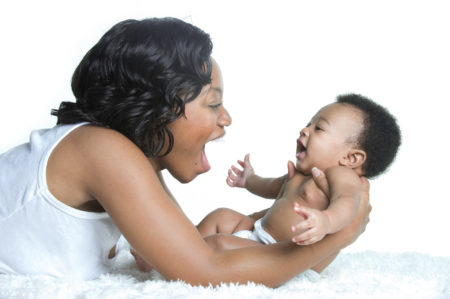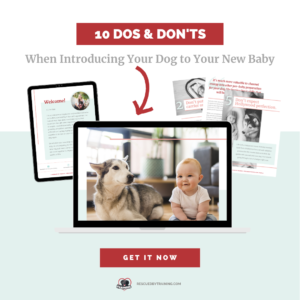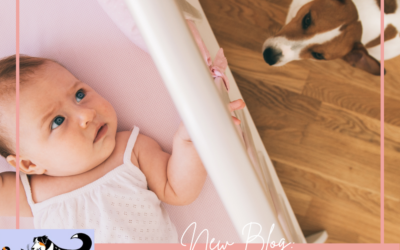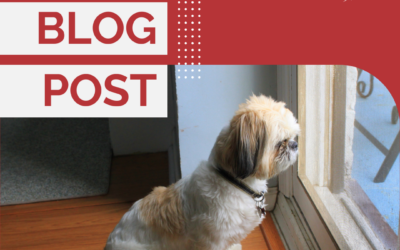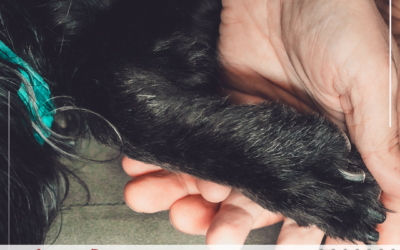This is the final installment of my Bringing Home Baby series. Check back tomorrow for a big free release right here and don’t forget to join me for a free Facebook Live Q&A on dogs and babies with my special guest, Katherine Davidson, CTC, CSAT and Owner of Dog Inspired, this Wednesday March 24 at 8PM ET. Submit questions ahead of time to get your questions answered!
Today’s topic is the important topic of modeling behavior. From the very beginning, newborns gaze into their mother’s eyes and that’s a great way to bond and connect. Human children learn that direct frontal eye contact is bonding experience and of course they’re going to expect that applies to anyone – human or dog – they want to connect with. Engaging in front direct contact is what we model but for a dog, and unsteady toddler with unpredictable behavior, crawling or staring at the dog can be threatening and uncomfortable.
How we greet, and the differences in our species can also be a source of conflict. Children might rush up to dogs the same way they might with humans, unless we teach them differently. Humans greeting with our excitement, loudness, animation, smiling, reaching and hugging can be really stressful or cause conflict for a dog. And none of these are ways dogs communicate or greet.
When a child wants to greet a dog they often will rush up to them, reach for them, try to hug or grab them and crowd them. Considering most toddlers are on eye level with many dogs, this is a recipe for a dog bite. 77% of dogs bites are from familiar dogs so we really need to teach our children proper, safe greeting rituals and properly supervise all child-dog interactions. This includes teaching children to not crowd dogs, not rush up to them, not reach out towards them and definitely no hugging or kissing.
And as adults, we need to be cognizant of what we model. Babies and children are excellent imitators and while some dogs will tolerate hugs and kisses, most dogs do not like them. But, children imitate adult behavior so please be really conscious and think about how you’re interacting with your dog around your children. A trusted, familiar adult is very different to a dog than an unfamiliar adult or a scary baby or toddler. Children also don’t have any dog body language awareness so while a dog may be communicating they’re uncomfortable around a child, the child won’t know to stop or back away to give the dog safety or space.
So, use caution with what you’re modeling, set a good example and properly manage and supervise all interactions to help set your dog up for success and to help keep your baby or toddler safe.
If you’re expecting a baby, schedule your pre-baby prep session where we review management, enrichment, training, homecoming plans, reducing attention seeking behaviors in addition to receiving lots of handouts with important information on making this transition safe and happy for everyone in the family and give you an opportunity to ask questions relevant to your specific situation. Schedule your session today!
Be sure to check back tomorrow for my next free download, 10 Dos and Don’ts When Introducing Your Dog to Your New Baby.
Happy training!
![]()

